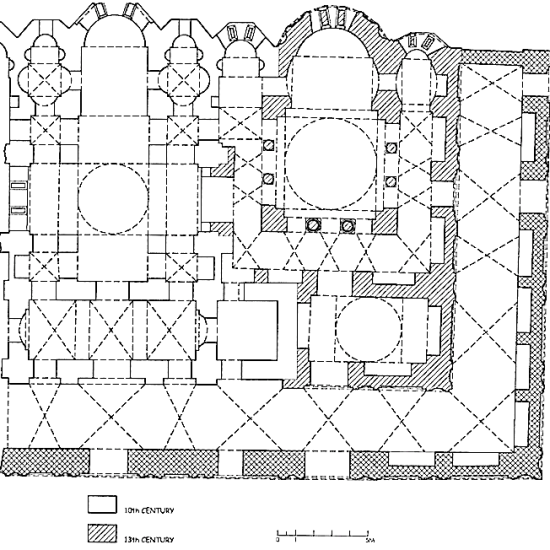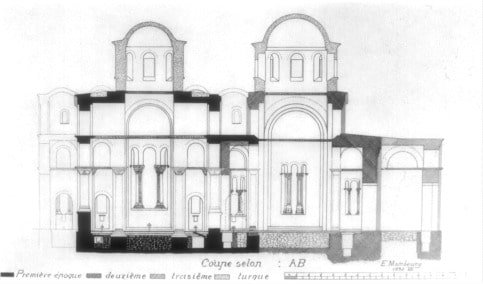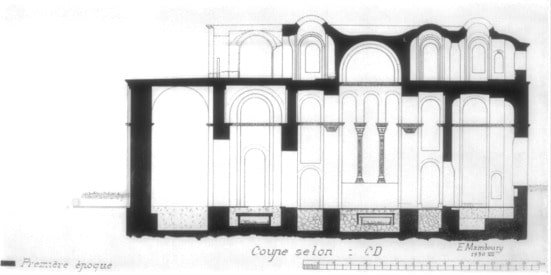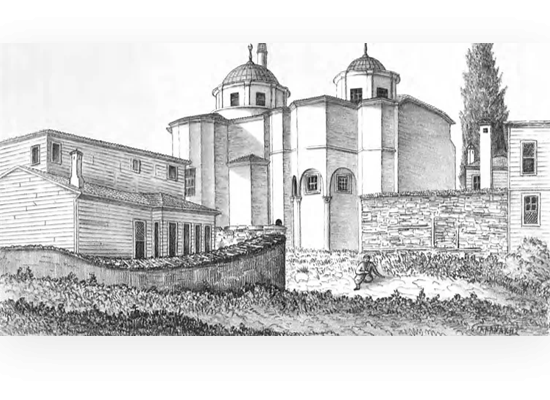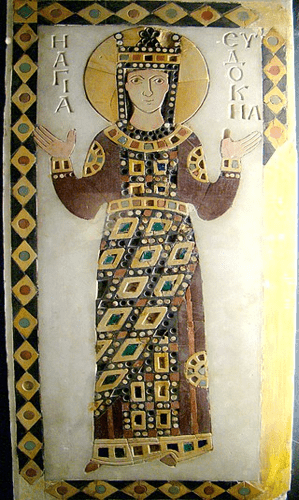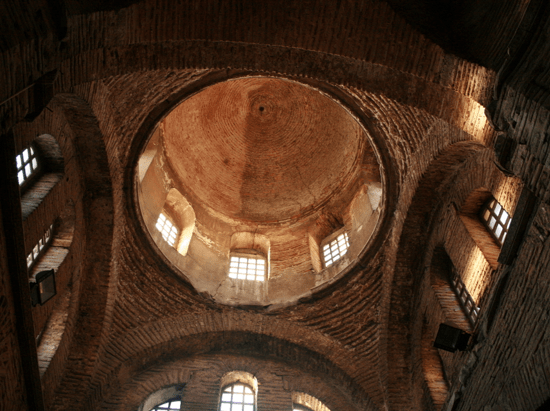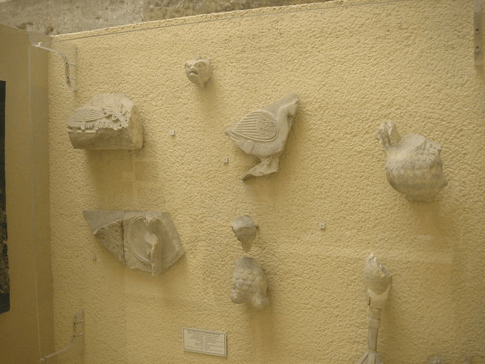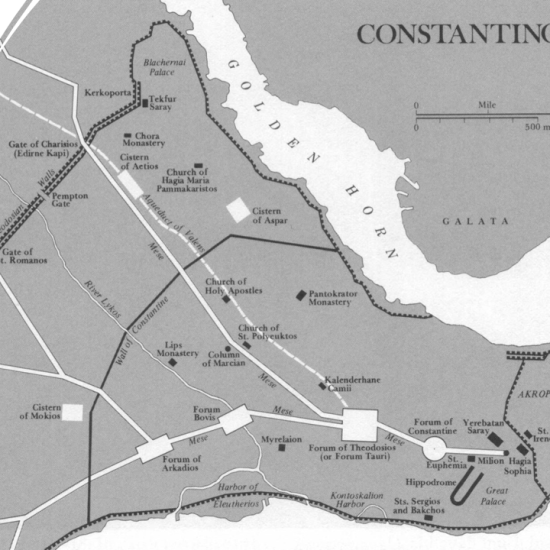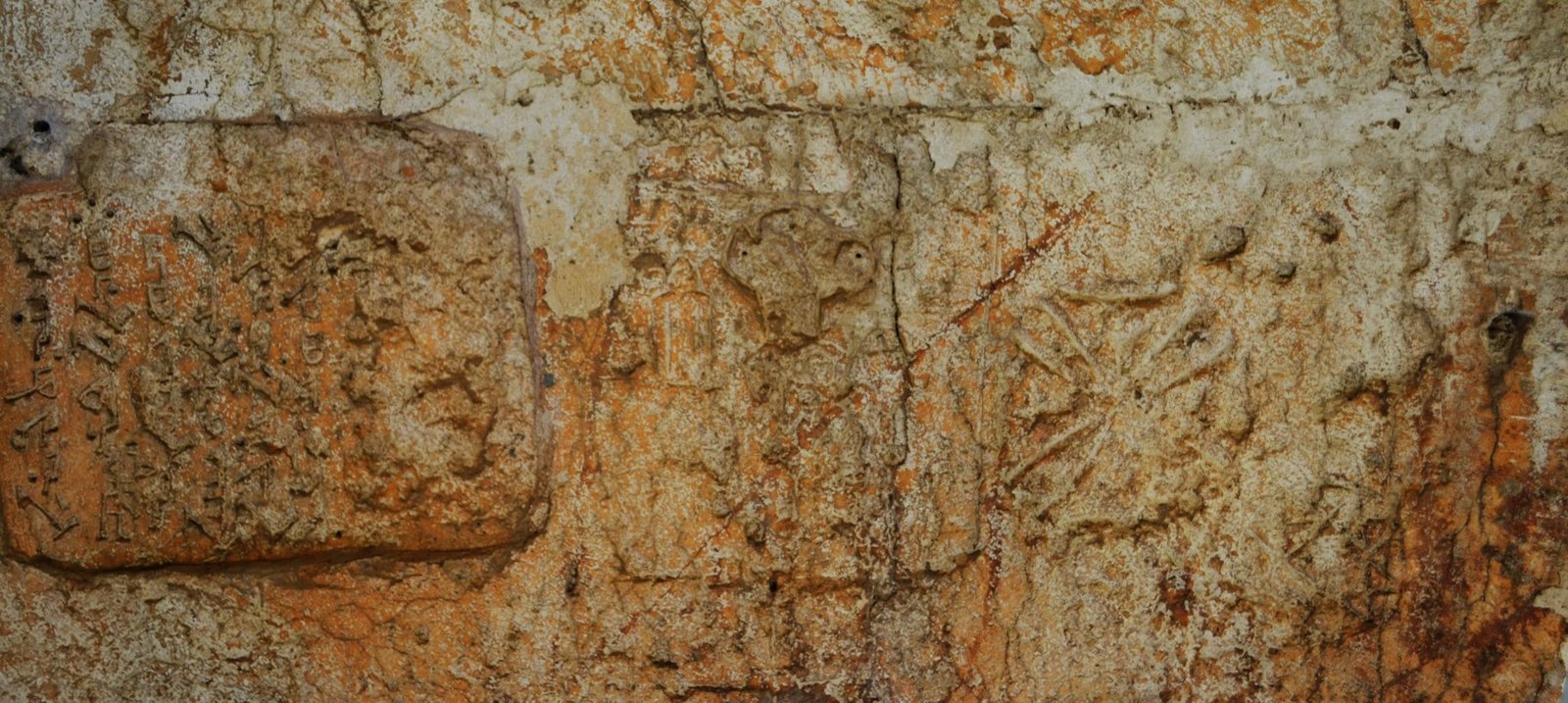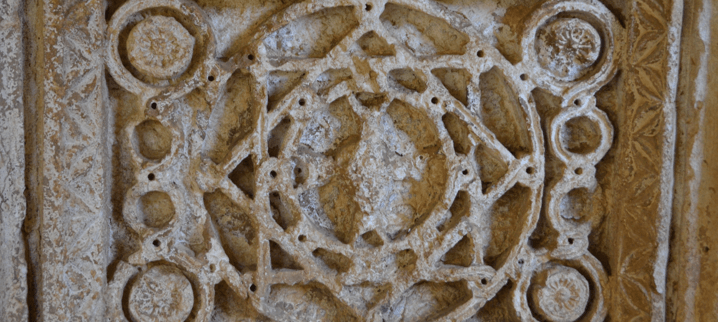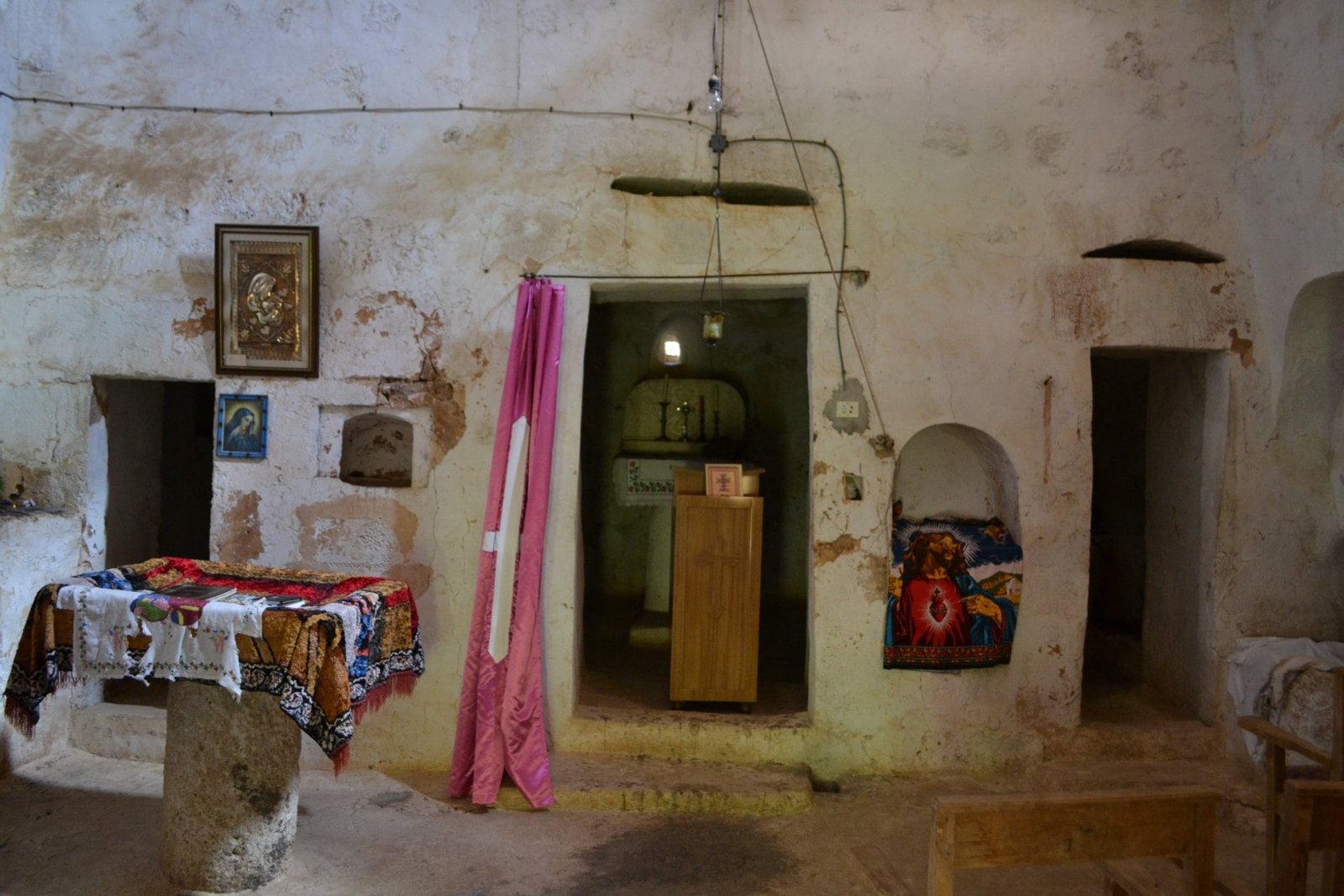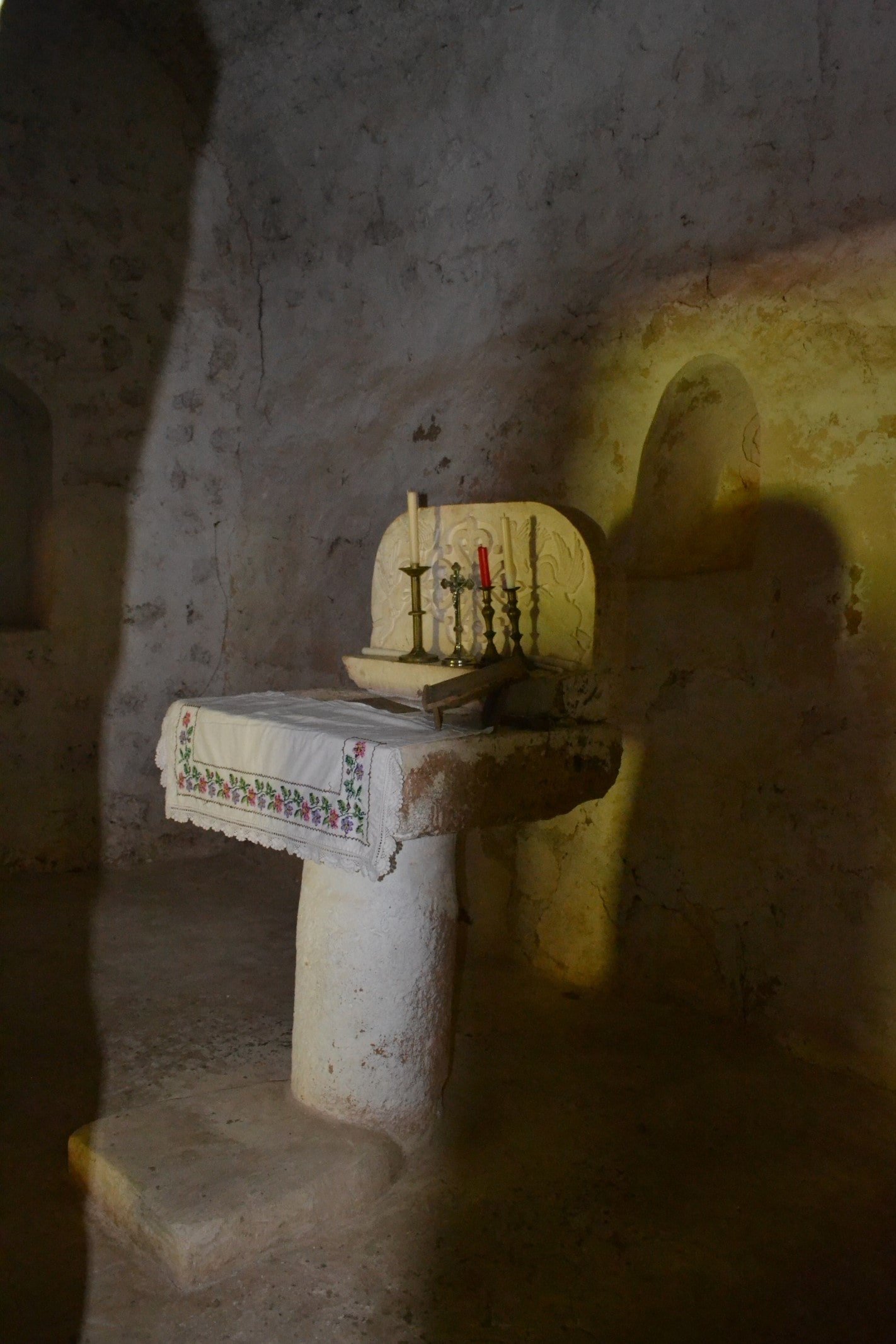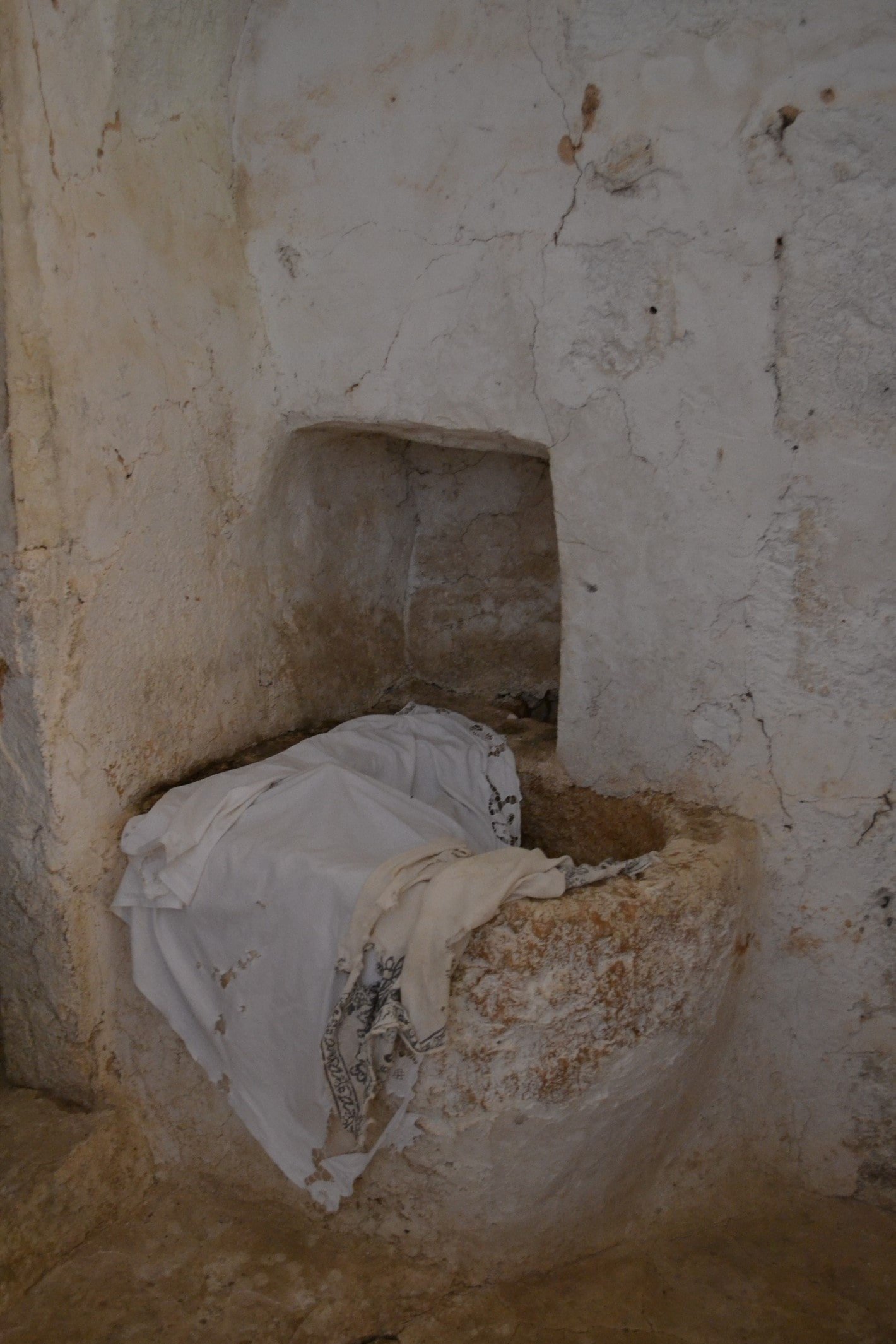The Monastery of Mor Sargis and Mor Bakos
per person
The Monastery of the revered martyred Roman soldiers Sergius and Bacchus, lies North of the Syriac village of Hah (the episcopal see of the Ṭūr ‘Abdīn since an early date up to 613 CE and again from the eleventh to the thirteenth century), currently known with the Turkish name of Anıtl. Its most ancient dated masonry is dated either to 691 or 789 CE (Palmer, Andrew. ‘Corpus of Syriac Inscriptions from Tur Abdin’. Oriens Christianus, Oriens Christianus, 71, 1987: 112-14; Hans Hollerweger et al., Lebendiges Kulturerbe : Turabdin : Wo Die Sprache Jesu Gesprochen Wird. Freunde des Tur Abdin, 1999: 175).
Some ornamental features suggest an eighth-century date of this small complex. The architect Keser Kayaalp claims that, after the Arab conquest, minor monasteries proliferated, such as Mor Loʿozor at Habsenas (which probably had an earlier phase), Mor Yuhannon and Mort Maryam Magdloyto [Mary Magdalen] near Mor Sargis and Bakos, and the latter itself (Keser Kayaalp, Elif. Church Architecture of Late Antique Northern Mesopotamia. Oxford Studies in Byzantium. Oxford, New York: Oxford University Press, 2021: 218-9).
FORMAL ANALYSIS
Mor Sargis and Bakos is a small squared unitary complex surrounded by a wall, which was visibly restored during the last century.
In this monastic church, as in the near Monastery of Mor Yuhannon at Hah, some seven- eight-century architectural changes were introduced, such as the absence of dividing walls between the rooms of the sanctuary. Moreover, similar to some of the larger examples of the monastic type, it has a large room to the north.
VIRGINIA SOMELLA
- THE MONASTERY OF MOR SARGIS AND MOR BAKOS © PHOT. VIRGINIA SOMMELLA, 2019
- MOR SARGIS AND BAKOS, VIEW OF THE MONASTIC COMPLEX FROM S. © PHOT. GABRIEL RABO, 2021
- MOR SARGIS AND BAKOS, SOUTHERN TERRACE, VIEW TOWARD N © PHOT. VIRGINIA SOMMELLA, 2019
- MOR SARGIS AND BAKOS, SOUTHERN TERRACE, VIEW TOWARD N © PHOT. VIRGINIA SOMMELLA, 2019
- MOR SARGIS AND BAKOS, SOUTHERN TERRACE, VIEW TOWARD N © PHOT. VIRGINIA SOMMELLA, 2019
- MOR SARGIS AND BAKOS, NARTHEX. DETAILS OF DECORATIVE CARVINGS AND SYRIAC INSCRIPTION © PHOT. VIRGINIA SOMMELLA, 2019
- MOR SARGIS AND BAKOS, NARTHEX. DETAILS OF DECORATIVE CARVINGS AND SYRIAC INSCRIPTION © PHOT. VIRGINIA SOMMELLA, 2019
- MOR SARGIS AND BAKOS, MAIN TRANSVERSE-HALL. VIEW OF THE NORTHERN WALL © PHOT. VIRGINIA SOMMELLA, 2019
- MOR SARGIS AND BAKOS, MAIN TRANSVERSE-HALL. VIEW OF THE DOORWAYS TO THE SANCTUARY ON EASTERN WALL © PHOT. VIRGINIA SOMMELLA, 2019
- MOR SARGIS AND BAKOS, MAIN TRANSVERSE-HALL. VIEW OF THE DOORWAYS TO THE SANCTUARY ON EASTERN WALL © PHOT. VIRGINIA SOMMELLA, 2019
- MOR SARGIS AND BAKOS, ALTAR IN THE UNITARY SANCTUARY © PHOT. VIRGINIA SOMMELLA, 2019
- MOR SARGIS AND BAKOS, MAIN TRANSVERSE-HALL. HOLY WATER FONT ON THE SOUTH WALL © PHOT. VIRGINIA SOMMELLA, 2019
Información de la localidad
The Monastery of Mor Sargis and Mor Bakos
| Other monuments and places to visit | |
| Natural Heritage | Shallow hill, with a plentiful growth of trees, surrounded by fertile fields and vineyards. |
| Historical Recreations | |
| Festivals of Tourist Interest | |
| Fairs | |
| Tourist Office | |
| Specialized Guides | |
| Guided visits | |
| Accommodations | Hotel or bed and breakfast in the cities of Midyat (28min by car) or Mardin (1h 41min by car). |
| Restaurants | Restaurants in the city of Midyat (28min by car). |
| Craft | |
| Bibliography | |
| Videos | |
| Website |
| Monument or place to visit | Monastery of Mor Sargis and Mor Bakos |
| Style | Remains of Late Antique local masonry structures, later medieval addictions. |
| Type | Monastic complex. |
| Epoch | 8th century – present. |
| State of conservation | Good conditions. |
| Degree of legal protection | |
| Mailing address | Anıtlı, Midyat/Province of Mardin, TR. |
| Coordinates GPS | 37°28'48.39N 41°36'41.77E |
| Property, dependency | |
| Possibility of visits by the general public or only specialists | Accessible to general public. |
| Conservation needs | |
| Visiting hours and conditions | |
| Ticket amount | Free access. |
| Research work in progress | |
| Accessibility | Easily accessible by car from Midyat (28min) and from Mardin (1h 41min). |
| Signaling if it is registered on the route | Not registered yet. |
| Bibliography | Hans Hollerweger et al., Lebendiges Kulturerbe : Turabdin : Wo Die Sprache Jesu Gesprochen Wird (Freunde des Tur Abdin, 1999), 175. Palmer, Andrew. ‘La Montagne Aux LXX Monastères. La Géographie Monastique Du Tur ’Abdin’. In Le Monachisme Syriaque, 169–259. Études Syriaques 7. Paris: Librairie orientaliste Paul Geuthner, 2010: 29. ID., Monk and Mason on the Tigris Frontier: The Early History of Tur `Abdin (Cambridge England ; New York: Cambridge University Press, 1990). Keser Kayaalp, Elif. Church Architecture of Late Antique Northern Mesopotamia. Oxford Studies in Byzantium. Oxford, New York: Oxford University Press, 2021: 218-9. ID., Syriac Architectural Heritage at Risk in TurʿAbdin. Istanbul: KMKD, 2022. T. A. Sinclair, Eastern Turkey: An Architectural and Archaeological Survey., 4 vols (Pindar Press, 1987). |
| Videos | |
| Information websites | |
| Location | Located in a S-E part of the Anatolian Plateau, on a shallow hill 500m north of the village of Anıtlı, Syriac Hah (Mardin, Turkey). |



